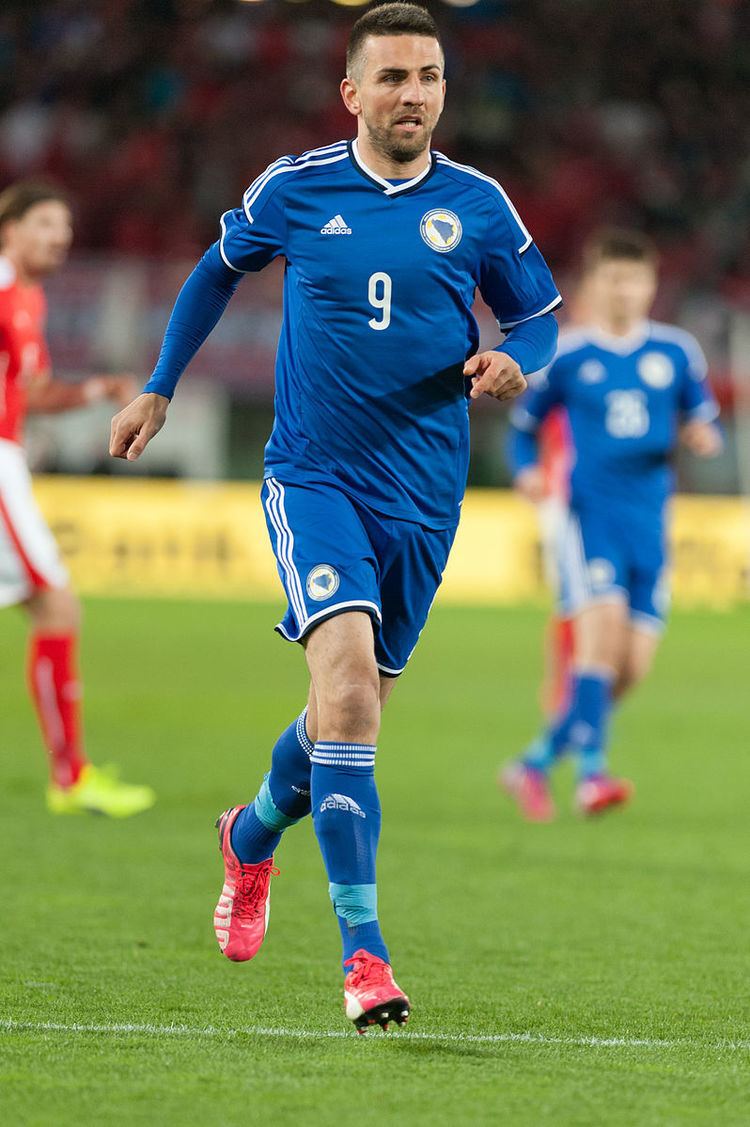 | ||
Bosnia and Herzegovina's most popular sport is football.
Contents
National team of Bosnia and Herzegovina
The team has only qualified for a major international tournament once as an independent nation, reaching the 2014 FIFA World Cup. It is yet to qualify for a UEFA European Championship, coming closest by losing to Portugal in the play-offs for UEFA Euro 2012.
Bosnia's home ground is Bilino Polje Stadium in the city of Zenica. The national team's first international victory as a FIFA member came against 1994 FIFA World Cup runners-up Italy on 6 November 1996. The national team's highest FIFA World Ranking was 13th in August 2013. October 2013 FIFA World Rankings, used to seed qualified teams in the 2014 FIFA World Cup Final Draw, placed Bosnia and Herzegovina as the highest ranked team of all former Yugoslav republics for the first time in history. In the past years, the national side finished twice among the top three best movers in FIFA World Ranking of the year. In their first game at their first World Cup, centre-forward Vedad Ibišević scored Bosnia's first ever goal at a major tournament in the country's history in a 1–2 loss to two-time World Cup winning opposition Argentina.
Short history of the game
The game reached Bosnia and Herzegovina at the start of the 20th century, with Sarajevo (in 1903) and Mostar (in 1905) being the first cities to embrace it. Banja Luka, Tuzla, Zenica and Bihać were next along with numerous smaller towns as the sport spread. The country was under Austro-Hungarian rule when official competition began in 1908, though these activities were on a small scale within each territory. At the outbreak of World War I, there were four clubs in Sarajevo; SAŠK, Slavija, Đerzelez (also known as Sarajevski), and Makabi Sarajevo (also known as Barkohba) and approximately 20 outside the capital. The creation of the Kingdom of Yugoslavia post 1918 brought an increase in the number of leagues, and soon a domestic national championship was organised featuring two teams from Bosnia and Herzegovina. In 1920, the direct predecessor of the football federation of Bosnia-Herzegovina was founded as the Sarajevo football subassociation. The unified Yugoslav championship ran until 1939/40.
The Football Federation of Bosnia and Herzegovina was founded after the Second World War, being affiliated to the Yugoslav Football Association.
Club football
Bosnia and Herzegovina's best sides at the time of former Yugoslavia were Sarajevo, Željezničar (Sarajevo) and Velež (Mostar) which played in the Yugoslavian first league, second league and cup competitions with moderate success, while its best players with the likes of Vahid Halilhodžić, Safet Sušić, Josip Katalinski, Faruk Hadžibegić, Ivica Osim, Asim Ferhatović, Blaž Slišković, Mehmed Baždarević, Dušan Bajević and many others were chosen to represent SFR Yugoslavia national football team.
Other notable clubs that participate in Premier League of Bosnia and Herzegovina are HŠK Zrinjski Mostar, NK Čelik Zenica, NK Široki Brijeg, FK Sloboda Tuzla, as well as FK Borac Banja Luka who participates in Prva Liga Republike Srpske in season 2016/2017.
Fans
Bosnians have a lot of love for their teams and show great support as fans. Ultras are common there with the biggest names as manijaci the supporter group of Zeljeznicar, Horde zla The supporter group of FK Sarajevo and the BHFanaticos the supporter group of the national side.
